3DWarehouse
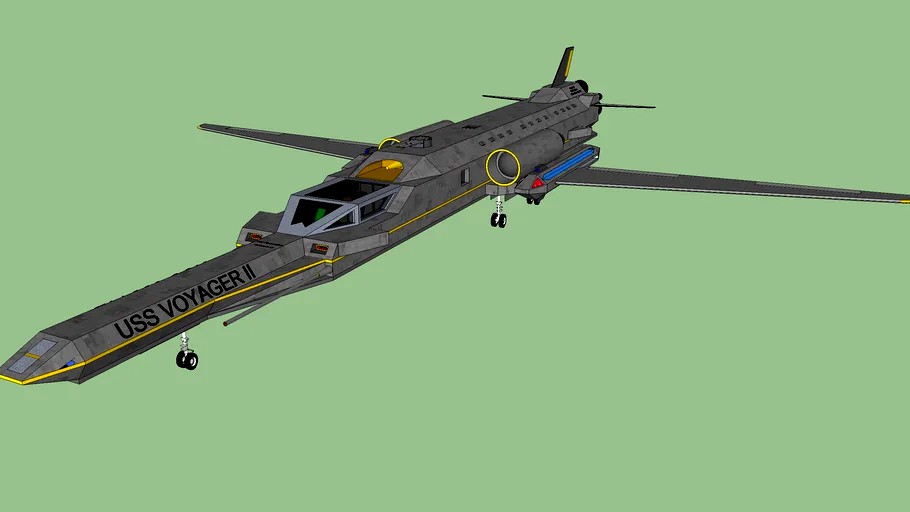
USS Voyager II NCC-030117
by 3DWarehouse
Last crawled date: 9 months, 1 week ago
VOyager II's technical spec's Length: 55.1 Feet Width: 9.9 Feet Wingspan: 52.8 Feet Weight: 30 Tons Armaments: X2 80 inch McBuster MK1 Heavy Blaster Cannons X2 Dual Blaster Turrets X4 Phase Cannons 30 Quantum Missiles (15 per launcher) Solar Flotonic Cannon RX-1 Phoenix Flame (special ability) Speed: one million M.M.P.S FTL Jump Factor: 20 Quantum Jump Factor: 30 Trance Jump Factor: 30 FTL Transum Jump Factor: Theoretical Instantaneous Travel Crew: 5 (one pilot, one navigator, two turret gunners, one engineer) Passenger compliment: 2 The USS Voyager II is a heavily modified R.F.B-117 class starship. The class itself was created for the United Earth Alliance to make a starship to fill three roles (Reconnaissance, Fighter and Bomber). The concept of the ship was designed by Joseph Martin, (adoptive grandfather to the lost Alexandrian Prince, Blake Alexandro). He took a Reconnaissance variant and heavily modified it to something that was truly unique. When the modifications were complete, he named the new ship the USS Voyager II, service number NCC-030117. With permission from the United Earth Alliance, Joseph and a crew of four took the newly modified ship to test out the ships new systems; but the true goal of the mission was to find the mythical world of Ginia, so that his adoptive grandson would one day use the ship to return home. However, when the crew was heading towards the last set of locations they had, the U.E.A caught wind of their mission and ordered the ship to return back to Neo-Earth (little did they know that the last set of coordinates would’ve placed them within three light-years from Ginia). Though they did test out the new systems, doing an unauthorized mission mandate to look for a planet that was considered a myth was more than enough to have the ship and her crew banned from active duty for several years and Joseph had the ship mothballed in the underground silo he had built near his home. By the time the ban was lifted on the ship, the USS Gunsnipe was built by Blake Alexandro and his friends to head to Ginia, it wouldn’t be another twenty Neo-Earth years before the ship flies again by another crew. While Voyager II is still considered a reconnaissance variant of the R.F.B-117 class, all the best attributes from the three variants made her the most powerful and technologically advanced ship than the entire class as well as a couple of unique features. Her two, eighty inch McBuster MK1 Heavy Cannons can do massive damage to heavy armor and shields. She also has a full complement of thirty quantum missiles and four phase cannons that are concealed in the nacelles. She also has two, dual blaster turrets, one on the top and one on the bottom. The turrets are either controlled by A.I. or by two gunners. Voyager II has two devastating attacks; the first is her Phoenix Flame attack. When activated, the ship is enveloped in a cloak of intense, super-heated flames that is powerful enough for the ship to pierce through other ships while protecting the ship within it. The second attack is her most powerful weapon, the Solar Flotonic Cannon RX-1. The top of the ship acts as one big solar panel, which powers the cannon, at full strength, the RX-1 can destroy an entire city and the radiation will leave the area uninhabitable for a hundred years. Voyager II’s defenses are greatly attributed from the bomber variant of the R.F.B-117. She has four layers of Neo-Titanium armor that make up her hull, she also has a type five primary shield system and a type nine secondary shield system that are both regenerative. She also has a retractable armor system that’s made of classified metals. This armor alone is hard to puncture even with the most advance weapons of the ship’s era. Voyager II has three main impulse engines and four booster engines, these engines are powerful enough for the ship to escape a planet’s gravity without the use of an external system. Her jump engines have three uses, the first use is to do FTL jumps, the engines can also be used to reverse the ship while in space by redirecting the energy flow from the main engines and out of the front of the FTL engines. The third ability is that the FTL engines can be used in atmospheric flight in case of an emergency. Voyager II’s wings and elevators have the ability to fold into the hull; this allows the ship to achieve fast speeds (an attribute from the fighter variant). The wings fold back in when the ship uses one of its three jump drives. Speaking of the jump drives, her most unique feature are the three FTL jump drive systems that is only used in Voyager II. She has a standard FTL Jump Drive system that’s mainly used for inter-solar system travel; she has a type 3 Quantum Jump Drive system, which is mainly used for deep space travel and her third drive, the Trance Jump Drive is a backup drive for the quantum drive. However, Voyager II is a testbed for the a new drive system that, when combining the three drives together would theoretically create an instantaneous point between two points; but the problem with this new drive is that it takes a highly advanced A.I. to carefully monitor the mixture of the three drives, too much of one drive can severely damage the other two drives. Voyager II won’t realize FTL Transum Jump much later after she was built. In the event that one of the cores is on the verge of breaching, instead of releasing each core individually, the engineer or pilot can release the entire jump drive assembly. The chamber the three cores are housed in is strong enough to suppress the explosion. It has to be because if the chamber itself breaches, the energy from the three cores has the potential to rip a hole in subspace that can last several billion years and the affected area would be impassable. The interior of Voyager II is separated into five sections. Cockpit, Main Entrance/Crew Quarters, Navigation, Gunnery and Engineering. The cockpit utilizes touch panels that control ninety-eight percent of the ship's systems, with the exception of the main controls, landing gear controls, throttle controls and the swept-back wing system. Beyond the Crew Quarters is Navigation. Here the navigator helps the pilot by sending him coordinates to the main A.I. and watches over the various sensors and radar systems to detect oncoming ships. In case the navigation system should fail, the navigator has a top viewport, so he can view the stars to find familiar star constellations. The Navigation room also acts as an emergency cockpit in case either the pilot or the cockpit itself is incapacitated. Behind the navigation room is the Gunnery, here two gunners man the two gun turrets to help fight off any threats. Lastly, behind the Gunnery is Engineering. Here the engineer is responsible for all of Voyager II's systems, from life support to the three FTL systems and if he needs to do some maintenance on the fly, there's a maintenance hatch that he can use to get into the guts of the ship to perform any fix necessary to keep the ship running. The versatility of the R.F.B-117 class starship is almost limitless as it's used in civilian applications, such as a freighter, inter-planetary transport and even a multi medical transporter. To this day, the United Earth Alliance continue to use the R.F.B-117 as its go to ship #fantasy #Gunsnipe #Gunsnipe_A #Gunsnipe_B #Gunsnipe_C #scifi #USS_Voyager_II
Similar models
3dwarehouse
free

U.S.S Gunsnipe N.C.C-033795
... was the most powerful ship of her time. #ark_2 #fantasy #gunsnipe #gunsnipe_a #gunsnipe_b #gunsnipe_c #prototype_gunsnipe #scifi
3dwarehouse
free

U.S.S Gunsnipe (Titanus Alexandro) era
... a thousand years before the ship is ever touched by someone again. #fantasy #gunsnipe #gunsnipe_a #gunsnipe_b #gunsnipe_c #scifi
grabcad
free

Black Star Private Security
...le two large linear accelerators under each wing, two plasma rocket batteries on the hull and a turret 75mm cannon under the hull
3dwarehouse
free

USS Sherry UGF-0981923-A
...built to withstand anything the enemy throws at her (similar to the alexandrian castle on ginia) and she'll ensure...
3dwarehouse
free
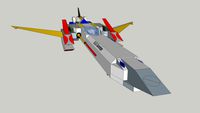
U.S.S Gunsnipe N.C.C-033795-B
..., allowing her to achieve a quantum warp velocity of 85,000. clearly, gunsnipe is the ultimate starship #fantasy #gunsnipe #scifi
3dwarehouse
free

space ship
...neering officers deck officer with two deck watch officers plus ten deck mates a ship's doctor with a nurse and two med techs
cg_trader
$299

Steam Ship
...y forward and backward.
she was used as coast guard ship and was armed with four 40-pounder cannons. her overall length was 63 m.
3dwarehouse
free

Turret II
... of energy weapon. creating the chain feed for the cannon took quite a bit of effort and ingenuity. #cannon #energy #ship #turret
3dwarehouse
free

U.S.S Minisnipe N.C.C-033487-B
...but in quantum warp she cannot break the 85,000 limit. #fantasy #gunsnipe #gunsnipe_a #gunsnipe_b #gunsnipe_c #minisnipe_b #scifi
3dwarehouse
free

TPS Protector
...quipid with quantum phaser and quantum torpedos multi adaptive shielding and two quantum cannons #protector #ship #star #starship
Ncc
cg_studio
$30

NCC-1701-Enterprise3d model
...nterprise3d model
cgstudio
.max - ncc-1701-enterprise 3d model, royalty free license available, instant download after purchase.
cg_studio
$2

Enterprise NCC 1701-D3d model
... 1701-d3d model
cgstudio
.max - enterprise ncc 1701-d 3d model, royalty free license available, instant download after purchase.
3d_export
$60

Ship Enterprise NCC-1701 of the Terran Empire
...textures. pbr targa textures and jpeg format 4096x4096 base_color, mixed_ao, heigt, metallic, roughness, normal_opengl, emissive.
3d_export
$60
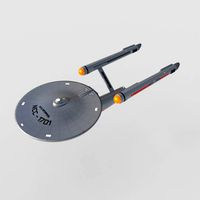
Ship Enterprise NCC-1701 from the original Star Trek
...textures. pbr textures targa and jpeg format 4096x4096 base_color, mixed_ao, heigt, metallic, roughness, normal_opengl, emissive.
3d_export
$25

USS ENTERPRISE NCC1701 3D Model
...rise ncc1701 3d model
3dexport
space ship star trek craft ncc-1071 sci-fi
uss enterprise ncc1701 3d model jclobato 96120 3dexport
3d_export
$5

Douglas Fir Forest trees
...such as passes like the nature conservancy of canada's (ncc#39;s) crowsnest pass. the tree has a thick burly bark,...
free3d
free

Voyager NCC 74656
...voyager ncc 74656
free3d
a textured .obj model of the spaceship voyager ncc 74656
free3d
free
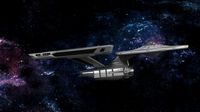
NCC 1701-a Uss enterprice
...ncc 1701-a uss enterprice
free3d
ncc 1701-a uss enterprice
free3d
free

Enterprise NCC 1701 D
...enterprise ncc 1701 d
free3d
a textured .obj model of enterprise ncc 1701 d.
free3d
free
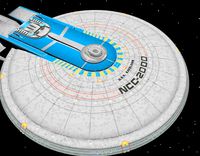
USS Excelsior NCC 2000
...uss excelsior ncc 2000
free3d
a textured obj. model of uss excelsior ncc 2000 spaceship.
Voyager
3ddd
$1

bag voyage
...bag voyage
3ddd
сумка
bag voyage
3ddd
$1

voyage
...voyage
3ddd
журнальный
стол для лофт..
turbosquid
$30
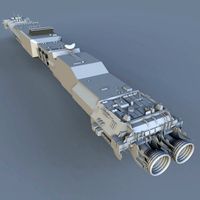
Voyager II
... available on turbo squid, the world's leading provider of digital 3d models for visualization, films, television, and games.
turbosquid
$25

VOYAGER-TRUNK
... available on turbo squid, the world's leading provider of digital 3d models for visualization, films, television, and games.
turbosquid
$15

Space Voyager
... available on turbo squid, the world's leading provider of digital 3d models for visualization, films, television, and games.
3d_ocean
$5

Hermes Voyage En Ikat
...atlas decor en hermes ikat kitchen national ornaments plate plates tajikistan uzbekistan voyage
plates from hermes voyage en ikat
turbosquid
$18

Voyage sofa by Cantori
...e 3d model voyage sofa by cantori for download as max and obj on turbosquid: 3d models for games, architecture, videos. (1383096)
3ddd
$1

кровать с тумбами Selva Voyage
...3ddd
selva , voyage
кровать с тумбами selva voyage, раскладка по стене американский орех
cg_studio
$49
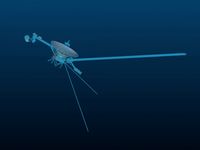
Voyager 13d model
...gstudio
.3ds .c4d .lwo .ma .max .obj .xsi - voyager 1 3d model, royalty free license available, instant download after purchase.
3d_ocean
$89

Lancia Voyager 2012
...y, in real units of measurement, qualitatively and maximally close to the original. model formats: - *.max (3ds max 2008 scanl...
Uss
3d_export
$5

USS Enterprise lego
...uss enterprise lego
3dexport
uss enterprise lego
turbosquid
$5

USS Miantonomoh
...id
royalty free 3d model uss miantonomoh for download as 3ds on turbosquid: 3d models for games, architecture, videos. (1677986)
3d_export
$49

USS Texas 3D Model
...uss texas 3d model
3dexport
submarine texas uss
uss submarine texas.
turbosquid
$200

USS Wisconsin
... available on turbo squid, the world's leading provider of digital 3d models for visualization, films, television, and games.
turbosquid
$200

USS Missouri
... available on turbo squid, the world's leading provider of digital 3d models for visualization, films, television, and games.
turbosquid
$35

USS Daedalus
... available on turbo squid, the world's leading provider of digital 3d models for visualization, films, television, and games.
turbosquid
free

USS Defiant
... available on turbo squid, the world's leading provider of digital 3d models for visualization, films, television, and games.
turbosquid
free

USS Potemkin
... available on turbo squid, the world's leading provider of digital 3d models for visualization, films, television, and games.
3d_export
$30

USS Defiant 3D Model
...uss defiant 3d model
3dexport
uss defiant star trek deep space
uss defiant 3d model djammyrasta 13946 3dexport
3d_export
$5

USS Prometheus NX-59650
...uss prometheus nx-59650
3dexport
the famous uss prometheus seen on star trek(voyager)
Ii
3d_ocean
$5

inoplanet II
...inoplanet ii
3docean
3ds arman3dg games ii inoplanet low max poly trees
inoplanet ii
3ddd
$1

Novecento II
...novecento ii
3ddd
консоль
консоль: ii novecento
дизайнер: elia monterosso
3ddd
$1

Спальня VENERO II
...d
venero ii , venero , hulsta
спальня venero ii
3ddd
$1
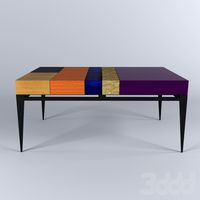
PROPORTION II
...proportion ii
3ddd
malabar emotional
консоль proportion ii
malabar emotional design
коллекция euphoria
3ddd
$1

Regina II
...ltrona frau , капитоне
this is a custom version of the poltrona frau regina ii armchair.
3d_export
$119

cinderella ii
...cinderella ii
3dexport
3d_export
$119

lara ii
...lara ii
3dexport
3d_export
$119

doris ii
...doris ii
3dexport
3ddd
$1

Heracleum II
...s endless technical possibilities,
making this new version much more efficient while providing unique and sparkling illumination.
3ddd
$1

Towel Collection II
...towel collection ii
3ddd
полотенце
towel collection ii
